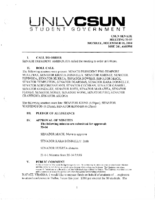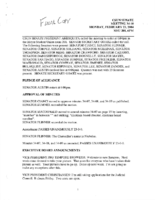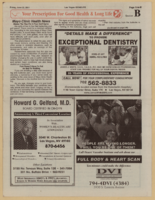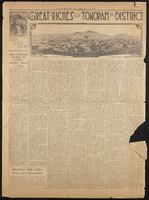Search the Special Collections and Archives Portal
Search Results

Interview with Ernest Benjamin Williams, October 27, 2004
Date
2004-10-27
Archival Collection
Description
Narrator affiliation: Budget and Logistics, Atomic Energy Commission, U.S. Department of Energy
Text

Interview with Linda (Mack) Smith, June 30, 2004
Date
2004-06-30
Archival Collection
Description
Narrator affiliation: Deputy Manager Nevada Operations Office, U.S. Department of Energy; Nevada Test Site Historical Foundation
Text

Interview with Marie Elizabeth (Stever; Daly) McMillan, February 4, 2004
Date
2004-02-04
Archival Collection
Description
Narrator affiliation: Secretary, Administrative Assistant, Holmes and Narver; U.S. Atomic Energy Commission
Text

Interview with Harold Melvin Agnew, October 10, 2005
Date
2005-10-10
Archival Collection
Description
Narrator affiliation: Physicist; Director, Los Alamos National Laboratory
Text

Interview with John Joseph Brown, September 26, 2005
Date
2005-09-26
Archival Collection
Description
Narrator affiliation: Radiological Safety Supervisor, Reynolds Electrical and Engineering Company (REECo)
Text

Meeting minutes for Consolidated Student Senate, University of Nevada, Las Vegas, December 06, 2004
Date
2004-12-06
Archival Collection
Description
Includes meeting minutes and agenda.
Text

Meeting minutes for Consolidated Student Senate, University of Nevada, Las Vegas, February 23, 2004
Date
2004-02-23
Archival Collection
Description
Includes meeting minutes, along with additional information about advertisements and assessments. CSUN Session 34 Meeting Minutes and Agendas.
Text

Meeting minutes for Consolidated Student Senate, University of Nevada, Las Vegas, April 26, 2004
Date
2004-04-26
Archival Collection
Description
Includes meeting minutes and agenda, along with additional information about Rebel Yell Operating Policy, Articles of Incorporation, and the Leadership of Advisory Board.
Text

Las Vegas Israelite newspaper, Section B, June 22, 2001
Date
2001-06-22
Description
Issue of the Las Vegas Israelite newspaper.
Text
Pagination
Refine my results
Content Type
Creator or Contributor
Subject
Archival Collection
Digital Project
Resource Type
Year
Material Type
Place
Language
Records Classification

